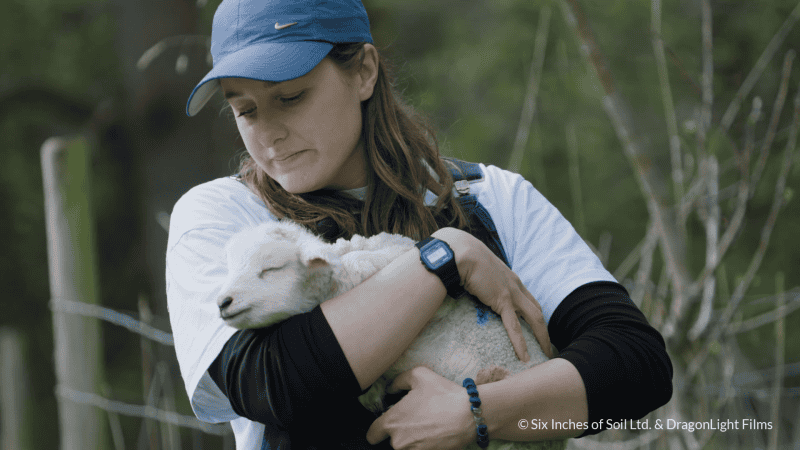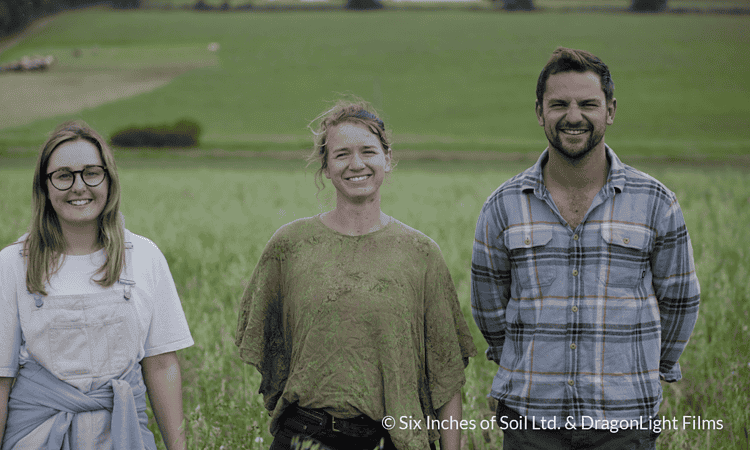PHIL KIRBY went to Headingley Heart to watch a film about soil.
Last week I went to see a documentary film called Six Inches of Soil, an event organised by ZestLeeds, Feed Leeds, and Foodwise Leeds.
Being from Yorkshire, and ancient, all I really know about soil is that it was the top layer of muck my dad’s generation had to shovel away to get to the nutty slack half a mile down.
For me, soil is just the accumulated dirt that’s a bugger to shift from the grooves in your garden decking.
The full extent of my understanding of soil could be written on a single leaf of clover, in triplicate.
I’m not what you’d call, a soil man.
Still, I am interested in food, and I’m vegetarian, so I suppose I should be more concerned about how my carrots, kale and cauliflowers are grown, which is generally in soil (yes, I am aware of hydroponics, which is a very popular leisure activity here in Armley, but for reasons very distinct from the cultivation of edible crops I would guess.)
So, I went along to the screening not knowing what to expect but hoping to learn something.
Six Inches of Soil describes itself as “the first full-length campaigning documentary feature film that tells the untold story of the UK’s regenerative and agroecology movement and its benefits to soil.” It tells the story of the soil and our food and farming system through the eyes of three new-entrant farmers and examines how we can replace this with a resilient and localised agroecosystem.
The aim is to inspire farmers with the confidence to shift to a more regenerative mindset and approach; to give consumers the impetus and information to rethink their food choices; and ultimately create a groundswell of public opinion leading to policy change support and funding for a British regenerative farming and agroecological revolution.
It’s a good film with lots of great stories, plenty of informative interviews, and the occasional laugh out loud moment (the bit where a young farmer was schooling her dad on the correct pronunciation of “quinoa” was priceless: “the world calls it keenwah…”) You couldn’t not want to support these committed, engaging, thoughtful people. And it did make me think about how our food is produced.
But it did leave me with more questions than answers.
And something was niggling me all the way through the film, though I couldn’t quite put my finger on it at the time.
It was only when I watched the trailer again that I twigged.
About 1 minute ten into the trailer (after some fairly hard-hitting sound-bites about the pollution, loss of biodiversity, and damage to the climate caused by modern methods of agriculture, and how wonderful everything could be if we “worked with nature,”) as the camera whizzes through vast supermarket shelves stacked to the ceiling with seemingly endless amounts of consumer goods, Professor Tim Lang warns us that,
“until you deal with 9 retailers who have 94.5% of food sales in Britain, you are not going to have a level playing field.“
Then the film cuts to a couple of static shots of open air market stalls, small, charming, postcard pretty, as a young livestock farmer solemnly decares,
“Consumers have a choice.”
We get a shot of a vast, enclosed, monochrome shed, crammed with cows chomping on something that doesn’t look healthy from a concrete floor
They can decide to buy cheap meat from industrial Farms or they can find farmers that really value animal welfare and the environment that we’re farming in.
Halfway through the last sentence we get a shot of a few random cows freely wandering down a leafy lane, then more cows merrily munching on a lush forest floor, before we gaze at a lingering shot of a young female farmer cuddling a very cute lamb…

Who wouldn’t want to live in a world like that? A world where the cows have the right to roam, where the shops sell locally grown produce in season, and where you knew the name of the farmer who sold the organic grain to the village baker who probably ground the flour in a windmill and baked it in an oven that’s been in the family since it was given them by Robin Hood.
That would be nice.
But I live in Armley. The sort of place that gives Professor Tim Lang nightmares.
I’m not sure people here have the sort of “choice” that this farmer sees as key to a better food system. Their “decision” to buy the cheap produce of industrial agriculture isn’t the result of careful deliberation after comparing the benefits of food purchased fresh from a flora-and-fauna-friendly farm with the crap they can pick up from the reduced items section of FarmFoods. And it’s not owing to being unenlightened about restorative farming.
Places like Armley don’t have a lot of choice.
Most of the soil round here is beneath six inches of tarmac.
Most of the people who live here couldn’t afford a bus trip to the local farmers’ market, even if we had one, and certainly couldn’t afford to shop there.
If anyone saw a live cow on the moor they’d scream at the kids to get indoors, slam all the windows shut, and call the emergency services.
And if a combine harvester ever drove down Town Street the shoppers would probably think it was a Manchester quad bike.
I don’t mean this negatively. I really love the idea of regenerative agriculture, being nice to our fellow creatures, supporting local producers and looking after the soil. I just don’t understand how I convince my neighbours this has any relevance in LS12. And how I support it other than as a very nice notion, which I’m very glad a few people are making a go of but can’t see what else I can contribute.
Anyway, go see the film for yourself. Let me know if you have any better ideas. The next screening is in Wetherby, so let me know if you have any better ideas.
